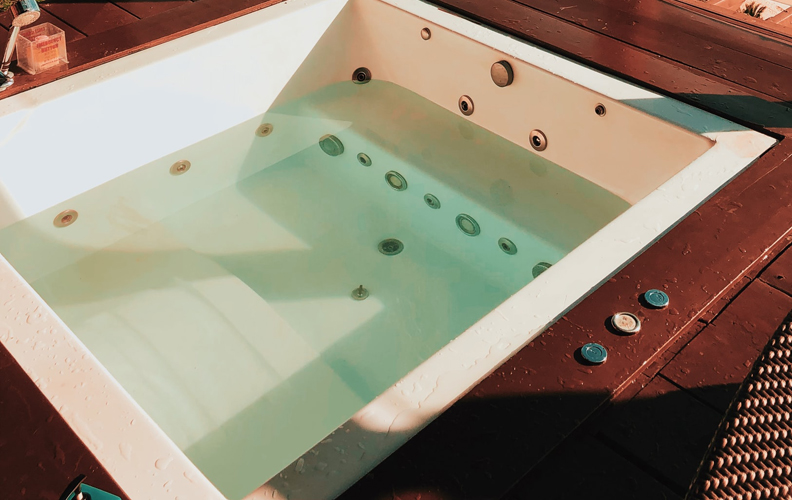Hot tubs & spa baths

Did you know there is a risk of contracting Legionnaires’ disease from hot tubs, jacuzzi's and spa baths that are not installed, disinfected or maintained correctly? Or that the growing popularity in hot tubs and spa baths means that many families now have a potential source of a Legionella outbreak within their homes and gardens?
It’s no surprise that once luxury items such as hot tubs are in high demand now low-cost versions are on the market - who doesn’t like to luxuriate in decadent bubbles after all? With recent events conspiring to keep us in our homes, our gardens are proving to be important places to relax and unwind. However, what many people don’t realise, is that these appliances need to be correctly installed and maintained, while also being regularly cleaned and chlorinated. Especially at the time of year that they are most in use.
Legionella and hot tubs
The combination of warm weather and sitting (stagnant) water creates opportunity for Legionella bacteria to grow. Legionella is the cause of a potentially fatal form of pneumonia, Legionnaires’ disease, which is contracted by inhaling tiny water droplets.
Due to the number of people who may use a hot tub, it’s likely to contain a fair amount of organic material in the water. Add to that the fact, that the average water temperature is kept at around 40oC and you have the perfect environment for bacteria, such as Legionella, to quickly grow. The agitation of the water can produce a fine mist of water, which makes it easy to inhale.
Figures from Public Health England show a seasonal rise in cases from June to October, with harmful Legionella bacteria incubating in as little as 2-10 days. Therefore those who let hot tub maintenance and disinfection regimes slip, could be at risk.
Hot tubs, jacuzzi's and spa baths - the facts
- Legionella can thrive in places such as hot tubs, jacuzzi's and whirlpool baths
- Legionella bacteria can incubate in as little as 2-10 days
- There is no legislation covering domestic hot tub installations
- It can cost up to £600 a year to heat a hot tub
- Hot tubs, even inflatable ones, are not fit and forget - they require ongoing maintenance regimes and costs.
Hot tub and spa bath installation
Whirlpools or spa baths can be another source of infection. Although the water may frequently be changed, stagnant water containing bacteria may remain in the jets and could re-enter the bath when next used. There is no legislation covering domestic hot tub installations. Meaning there is little to protect consumers from the dangers that poorly designed or maintained systems can bring.
If you are considering installing a hot tub or spa bath, the CIPHE advises using a professional plumbing engineer for installation. It is hugely important to follow the manufacturer’s instructions for cleaning, disinfection and maintenance to the letter.
Maintaining and disinfecting hot tubs and spa baths
Due to the use of different materials in tubs and baths, there is no ‘one-size-fits-all’ strategy for disinfecting and maintaining systems. It is essential that you follow the manufacturer’s instructions to the last word and are aware of all the costs involved in maintaining your product before you buy it.
With yearly heating bills for some hot tubs hitting £600, consumers must not allow themselves to become victims of a temptation to cut corners and costs.
CIPHE Safe Water Campaign
Test your knowledge on water temperatures and help us to get our message regarding water safety out.
Take our surveyFind a plumber
Need a hot tub or spa bath installed? CIPHE members are professional, competent and skilled plumbing and heating engineers. Find yours today!
Find a PlumberLegionnaires' disease
Legionnaire's disease is a potentially fatal form of pneumonia. Find out the facts.
View our Legionella page